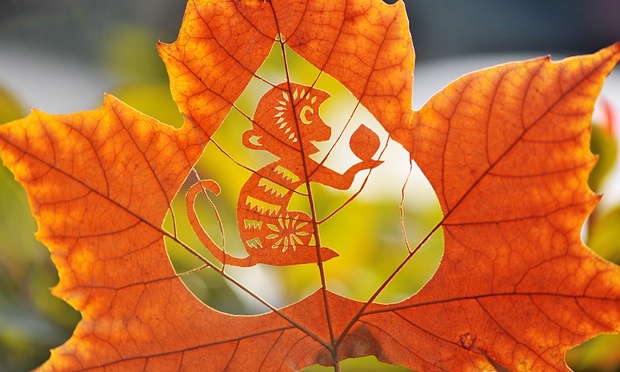From exploring our simian relations to creating Chinese art and learning Mandarin, here’s our guide to teaching this festival.
Are you a rat? A tiger? Maybe you’re a dragon? Don’t worry, we’re not talking about your staff room persona – although we can all probably think of a snake or two – but rather the signs of the Chinese zodiac. The Chinese lunar new year and the beginning of the year of the monkey starts on 8 February. It’s a time of celebration and new beginnings, and a great way to introduce your students to another culture. So how best to bring a bit of monkey business to your classes?
Primary
This comprehensive year of the monkey education pack from the British Council is an excellent place to start. It includes detailed lesson plans and resources looking at the history of the festival, creative tasks such as making indoor kites and Chinese opera masks, and a research project on the endangered snub-nosed monkey.
For more background on the celebrations, this simple video will give your students an understanding of the Chinese calendar and its roots in the legend of a swimming race between animals of every species. And once your pupils have got to grips with that story, they can create their own tales with this simple monkey-themed story starter from PrimaryLeap. This comprehension activity uses a character called Marcus the Monkey to present a series of monkey facts before asking pupils to demonstrate their understanding with a quiz.
This Chinese new year-themed worksheet from TeachIt takes the traditional colour of the festival, red, and uses it as the basis for games and poetry-writing. Sticking with tradition, Twinkl has this resource that asks pupils to imagine how they would make use of the envelope of money given out for the festival, as well as a series of writing frames based on the animals of the Chinese zodiac.
Twinkl also offers these Chinese zodiac-themeddecorative borders for writing tasks and animal-adorned posters of numbers for a numeracy reminder. If you want to go further in decorating your room for the festival, these resources from the British Council will show your students how to make Chinese hand scrolls and traditional lanterns.
Finally, you and your class can get further into the spirit with this British Council resource on life in a Chinese primary school, which introduces the daily routine of exercising together each morning, teaches the basics of calligraphy and shows students how to master some simple Mandarin words. There are lots more Mandarin resources available here.
Secondary
For a musical introduction to the Chinese legend of the monkey, try this video on Blur frontman Damon Albarn’s 2007 creation Monkey: Journey to the West – a stage adaptation of the novel Journey to the West by Wu Cheng’en. Albarn describes the story as making “Lord of the Rings look a bit pedestrian” (yup), and explains how the rich and fascinating history of the country informed his final creation.
For a literary approach to monkeying around, try The Monkey’s Paw; a short supernatural horror story penned by WW Jacobs in 1902. TeachIt offers this wordsearch and series of comprehension questions based on the story. Warning: contains war, severed simian parts and some magical wishes that go gruesomely wrong.
This sound file from Captive Memories tells an equally amazing monkey-related story, with an historical spin. Speaker Cyril Jones recalls how during his time as a soldier in the far east serving in the second world war, he was helped to survive by a monkey, who befriended him and gave him coconuts, bananas and other fruit, as well as bamboo shoots, over a series of days. The incredible tale could be used as a prompt for creative writing, art, or a look at the outposts of the second world war.
You can also use our simian relations to start a debate on image ownership and the internet, with the story of the legal battle over the monkey who took a selfie that went viral. Get your students to consider whether an animal – particularly one this talented – should be able to own copyright. If not, why?
To indulge your students’ own creativity, introduce them to Chinese art with this guide from the British Museum. It explores the materials used throughout the ages in the country, as well as the striking traditional decorative styles. It teaches students to create their own cast vessels (from plasticine rather than bronze) and their own lacquer (using candle wax).
Finally, you can give your classes a simple introduction to Mandarin with these resources from the Confucius Institute at the University of Manchester, which offers a guide to introducing yourself, a series of greetings and useful phrases, an introduction to numbers, and a guide to family members.
